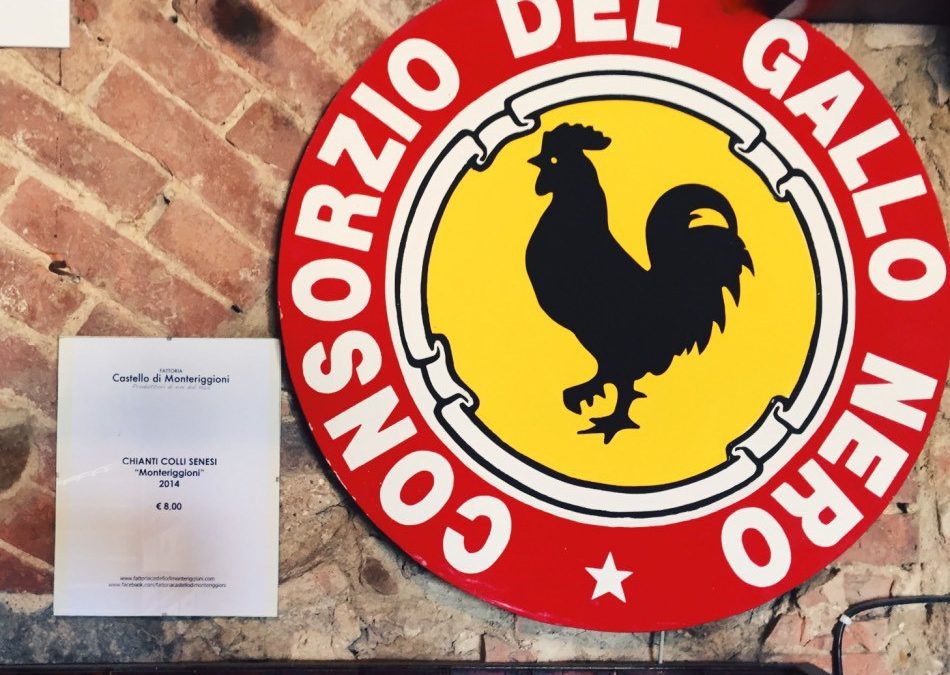Chianti vs Chianti Classico wines.
If you go home from Tuscany with just one fun memory, it should be one that you can keep revisiting – like how to distinguish
Chianti vs Chianti Classico?
When you make the decision to tour the wine regions in the region of Tuscany, you will be practically bombarded with areas to visit, taste and explore – each with their own special brand of excellence.
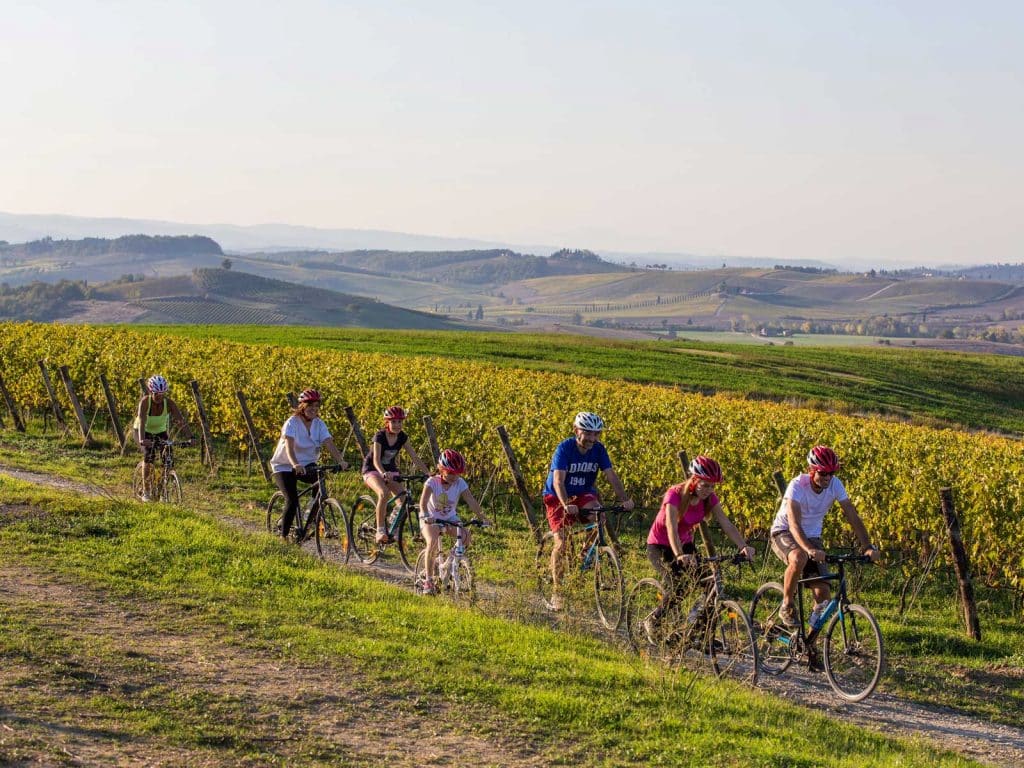
Chianti vs Chianti Classico once again : Probably the two that stand out from all of the rest are Chianti Classico and Chianti – which you may have mistakenly believed to be one and the same. Yet, these very distinct designations were established by law and cover two very precise geographical areas.
Chianti vs Chianti Classico : The characteristics of the wine grown in these zones are both regulated by legislation and acquired from Mother Nature herself. In the same way, the land has been codified, so are the grapes in this magical recipe.
Chianti vs Chianti Classico Denominating the Chianti borders
The villages of Castellina, Gaiole, and Radda in Chianti gained particular renown for the wine producing capabilities, but that came after these three villages formed the Lega del Chianti (League of Chianti) which originally served as a form of protection on the Florence – Siena border. Today it is the core of the Chianti Classico denomination.
In 1716 Cosimo III, Grand Duke of Tuscany officially delimited the production zone of Chianti wine which, in a grand part, is known as Chianti Classico, following the borders created in the 13th century with the League of Chianti.
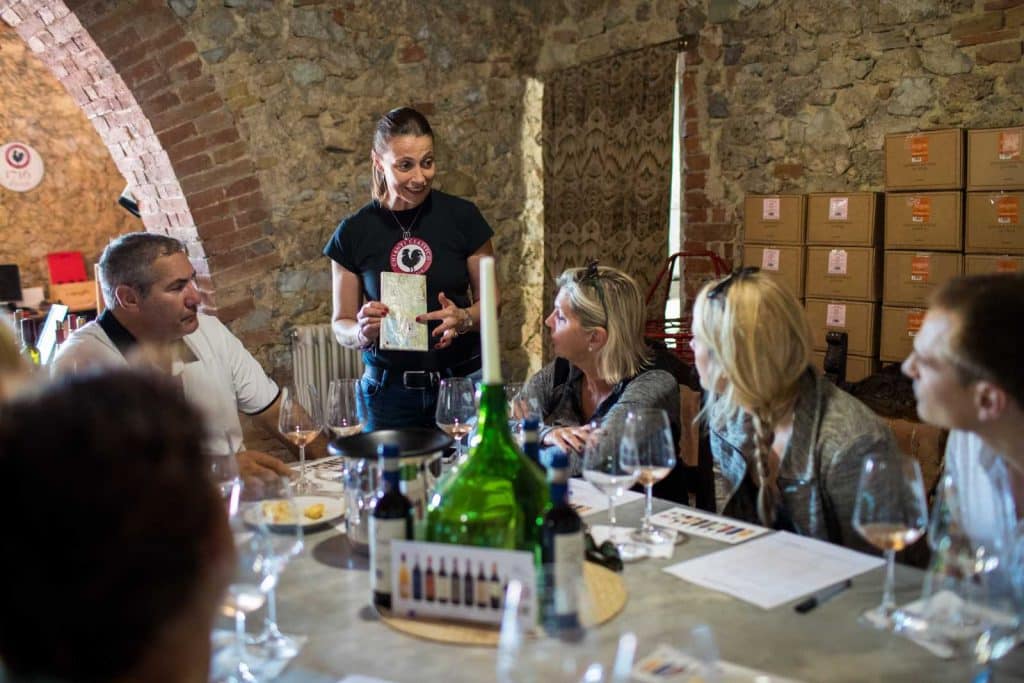
Wine tasting at our organic farm – Bike Florence & Tuscany
Then, in 1932, the Chianti area was completely re-drawn and changing the landscape of Chianti. It would now be divided into seven sub-areas: Classico, and the “non”-classico or what is known as Chianti, and this area includes Colli Aretini, Colli Fiorentini, Colline Pisane, Colli Senesi, Montalbano, and Rùfina. Other modifications have been legislated in recent years, but the core remains the same.
Chianti vs Chianti Classico Terroire: The Main Ingredient in Wine
But good wine doesn’t come about because of codified borders.
In fact, if you ask any vintner, they will most probably tell you “anyone can make wine – but it takes good terroir to make good wine”.
And you need great terroir to make great Chianti wines.
Simply put, terroir is a French word for dirt, and the areas Chianti and Chianti Classico excel in quality dirt. The valleys and hills of Chianti, which once stood underwater and are now covered with low lying forests, are comprised of extremely fertile land.
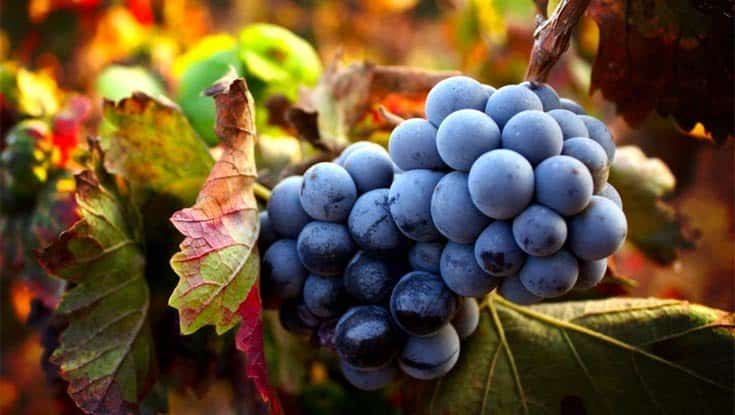
The result is a wide diversity of minerals, with several types of clay, and stone in varying quantities; each vineyard contains a combination of these elements. This is the secret behind quality wines along with a mild climate, lots of sunshine … and the passion to make truly great wines.
Why the Black Rooster? Legend tells us that in the 13th century Florence & Siena held a horse race to end their land dispute over Chianti. Departing from their respective homes, they decided to use a rooster as the signal to start and the meeting point of two knights would mark the boundaries
The Florentines selected a black rooster. They closed it away with no food or light, in the hopes that it would crow early on the day of the race – giving them the advantage over Siena. And it worked, he sang much earlier than dawn. Thus the Florentine knight left before the Sienese rider, meeting him just 20 km from Siena walls.
And this explains Black Rooster has been the symbol represented on a bottle of Chianti Classico.
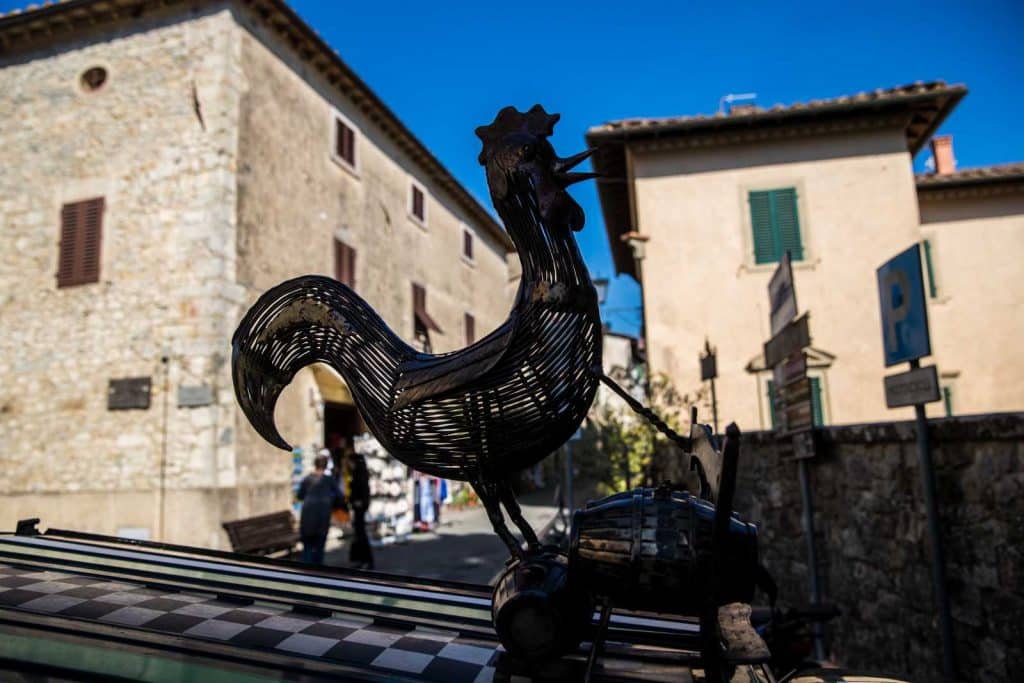
Codifying the Chianti Recipe
The land may be the prime ingredient, but that doesn’t mean that the recipe doesn’t play an important role.
Wine has changed over time, in fact, documents show that in the middle ages Chianti was known only as a white wine. It is a rather recent development that it gradually evolved into a bottle of predominately red wine.
And if you really want to get precise, you can thank Baron Bettino Ricasoli, a past Prime Minister in the Kingdom of Italy. In 1872, he presented us with the first known “Chianti recipe”: “recommending 70% Sangiovese, 15% Canaiolo and 15% Malvasia Bianca.”
In 1967, this recipe, known as the “Ricasoli formula”, was firmly established, defining a Sangiovese-based blend with just a small change in the proportions, however, the typical Sangiovese grape was still the main ingredient.
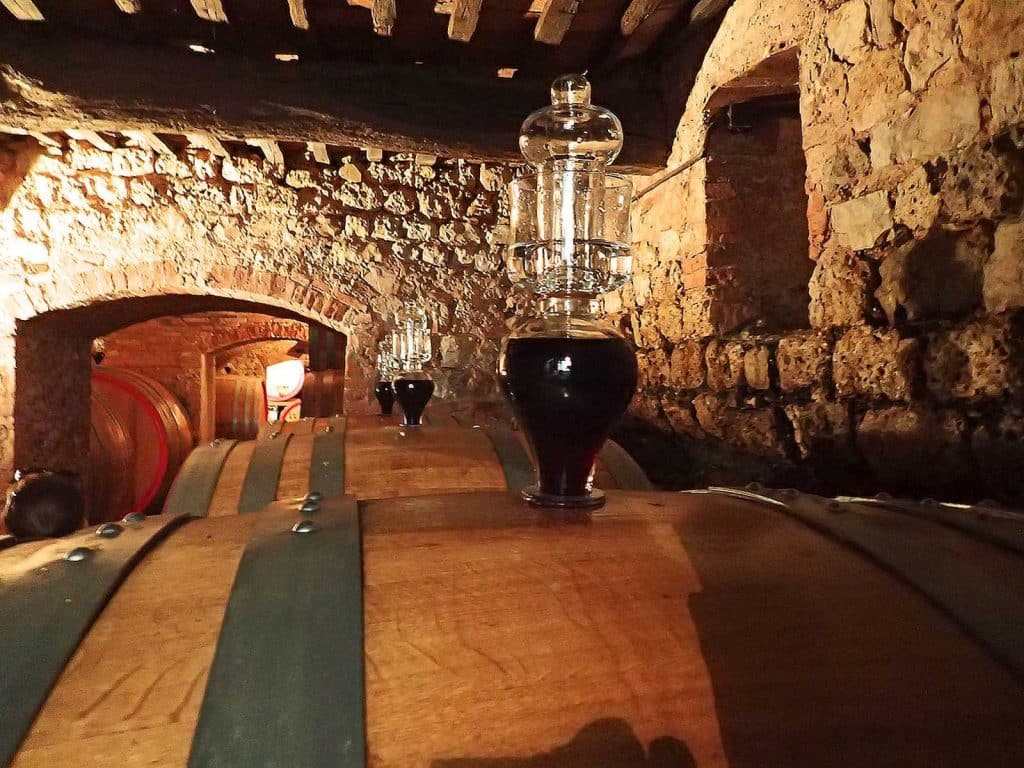
Ageing cellar – Bike Florence&Tuscany
In order to qualify for the coveted Black Rooster label (Gallo Nero) and thus the Chianti Classico title and distinctive pink label around the neck of the bottle, there are several other constraints that each denomination has added to their own particular recipe especially related to the aging process and the origin of the grapes. Chianti also has its own regulations, which allow for a little more room to experiment with international grapes and the personal preferences of the vintner.
Defining Chianti vs Chianti Classico
The next time you read a label, this short story about the differences should help you remember how history shaped the distinction between Chianti Classico vs. Chianti wines. And how, even though the names are similar, the differences for wine growers are very real.
The same can be said for the landscapes. There are as many different landscapes, combining olive groves, vineyards, small hilltop towns and fields of grain or sunflowers. Each is a slice of pure beauty, highlighting the natural elements of the panorama from low hills to sloping valleys, from hilltop fortress to brownstone parish churches, from sunflower fields to olive groves.
So when someone tells you that this is from Chianti, you will now know that there are several ways to appreciate the land and its vast diversity.
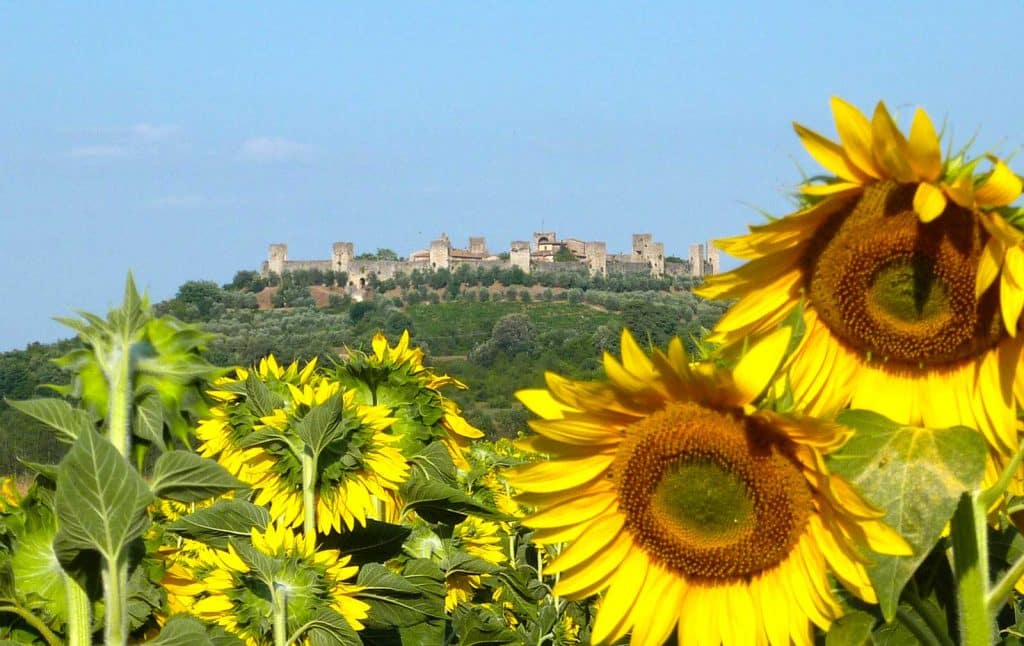
Choosing your Chianti vs Chianti Classico Itinerary
It is for this very reason, that Piero and Elena have always considered it an important part of their bike tour itineraries from Bike Florence and Tuscany to distinguish these different aspects of Tuscany. They have created distinct itineraries in Chianti and Chianti Classico which inevitable include fun combined with a wine experience to learn about the winemaking process & the landscape.
These routes may cover Chianti but each offers a distinct riding, wine, and landscape experience:
– highlight the natural beauty & towns (San Gimignano to Siena)
– visiting the heart of Chianti Classico (Crossing Chianti to Siena)
– visit the castle of Ricasoli, the founder of the Chianti recipe (Chianti Classico).
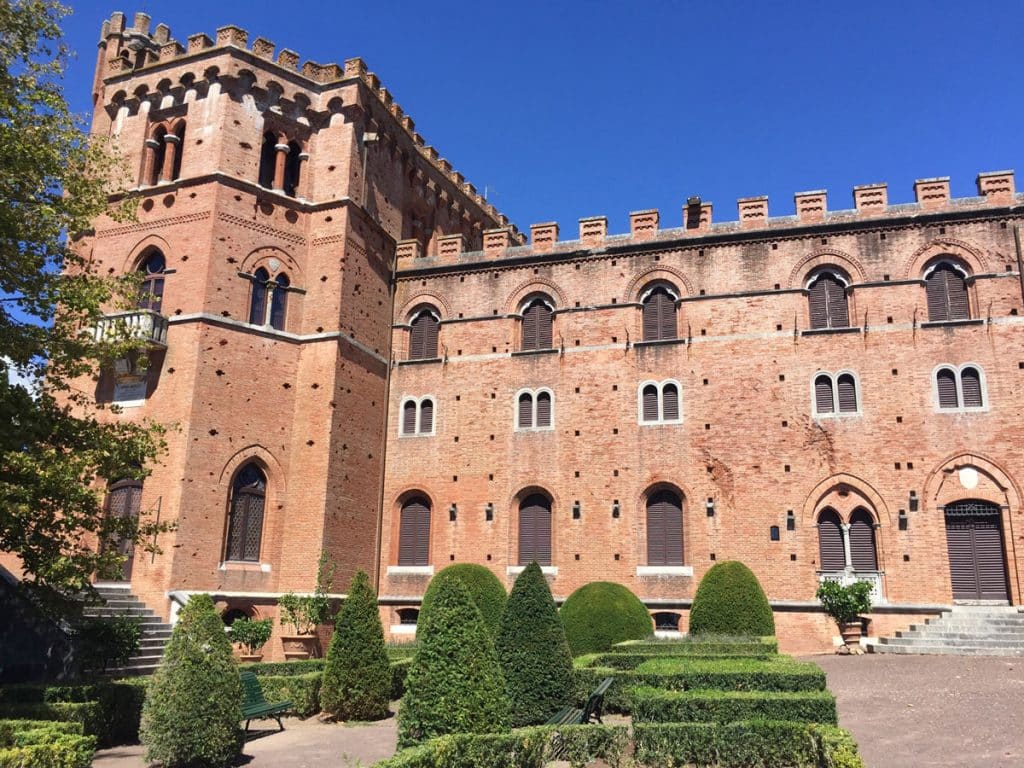
Chianti Classic bike tour – The Brolio Castle

